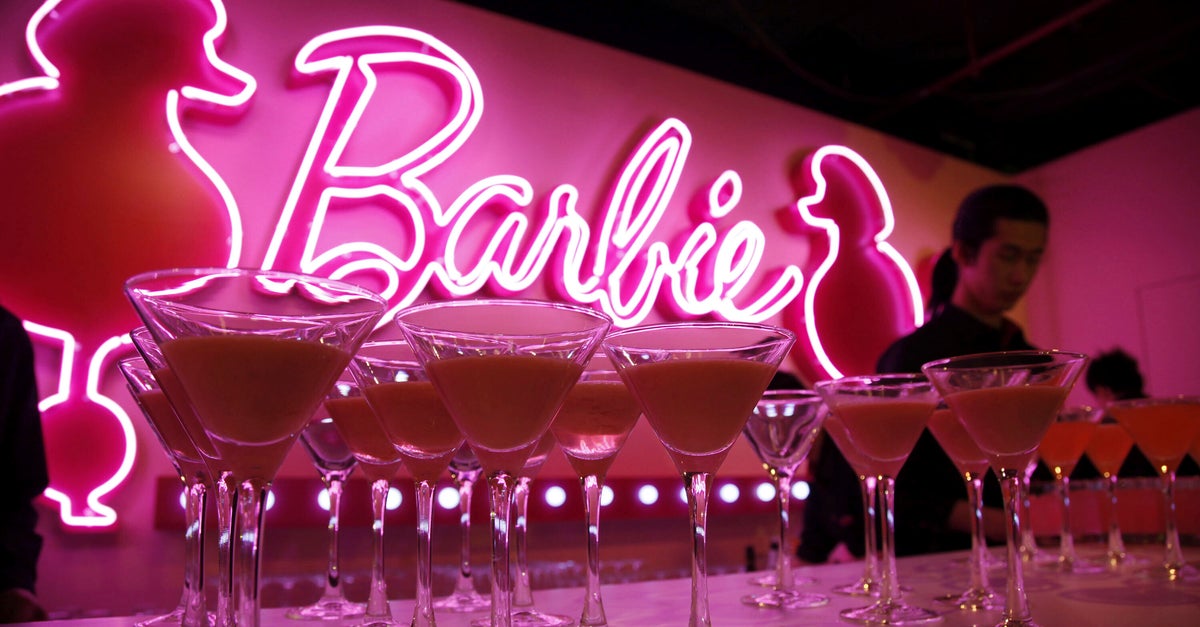When it’s time to shop for summer clothes and you want to stand out, think pink! This catchy advice from the 1957 musical film “Funny Face” has resonated throughout the years, leaving a profound impact on fashion and media. Pink, with its many shades and connotations, has become a cultural phenomenon that continues to captivate us, especially during the peak of “Barbie” season.
From iconic movie scenes to popular television shows, pink has always played a significant role in visual storytelling. Films like “Funny Face” and “Legally Blonde” showcased the power of pink in establishing memorable characters and conveying symbolic meaning through clothing choices. Even recent releases like “The Marvelous Mrs. Maisel” and Greta Gerwig’s film have embraced the vividly hot “Barbie Pink,” cementing its presence in contemporary culture.
Throughout history, pink has been a color that evokes strong emotions and carries diverse meanings. It first gained popularity in the French court of the 18th century, thanks to a new dye that provided vibrant and long-lasting hues. Over time, as pink became more accessible to the working class, its association with wealth and prestige diminished. In the 1920s, U.S. department stores arbitrarily assigned blue to boys and pink to girls, further shaping our perceptions of the color.
In recent years, pink has experienced a resurgence in popularity. Pantone’s choice of “Rose Quartz” as the color of the year in 2016 reflected the rise of a more inclusive and gender-fluid society. This muted, dusty pink exudes both calmness and strength, perfectly capturing the essence of the “gender blur” that has become prevalent in our culture. Fashion and interior designers quickly embraced this shade, dubbing it “millennial pink.”
Pink has always been a color that inspires controversy and pushes boundaries in the world of fashion. British artist Stuart Semple even considers it a symbol of rebellion and a way to challenge conventions. In 2016, Semple created the vibrant and fluorescent “pinkest pink” paint as a response to artist Anish Kapoor’s exclusive ownership of the world’s blackest black pigment. Semple made his paint accessible to everyone except Kapoor, emphasizing the importance of sharing creative resources.
Pink is also making waves in subverting traditional gender norms. Male artists of color like Bad Bunny, Tyler, The Creator, and Jaden Smith have sparked conversations about masculinity by embracing pink clothing. It allows them to challenge societal expectations and stake a claim to leisure and self-expression.
However, at its core, pink remains a flattering color that appeals to our sense of aesthetics. Its flattering qualities make it a popular choice for many individuals. Furthermore, Mattel capitalizes on the empowering symbolism of pink in its Barbie brand. Barbie, often associated with the color pink, has become a symbol of girl empowerment. The vibrant and joyful nature of “Barbie Pink” perfectly represents the spirit of the brand.
It’s worth noting that the perception of color is deeply rooted in our emotions and can greatly impact our purchasing decisions. Marketers understand the power of color in conveying messages and establishing emotional connections with consumers. Pink, with its wide range of meanings, provides endless opportunities for brands to captivate their target audience. From high fashion collaborations to everyday items, pink continues to shape our perception of color.
In conclusion, pink has transcended its origins to become a cultural force that inspires and challenges our traditional notions. Its various shades evoke different emotions and carry cultural significance. So, the next time you shop for summer clothes or express yourself through fashion, remember the power of pink!
Denial of responsibility! VigourTimes is an automatic aggregator of Global media. In each content, the hyperlink to the primary source is specified. All trademarks belong to their rightful owners, and all materials to their authors. For any complaint, please reach us at – [email protected]. We will take necessary action within 24 hours.


